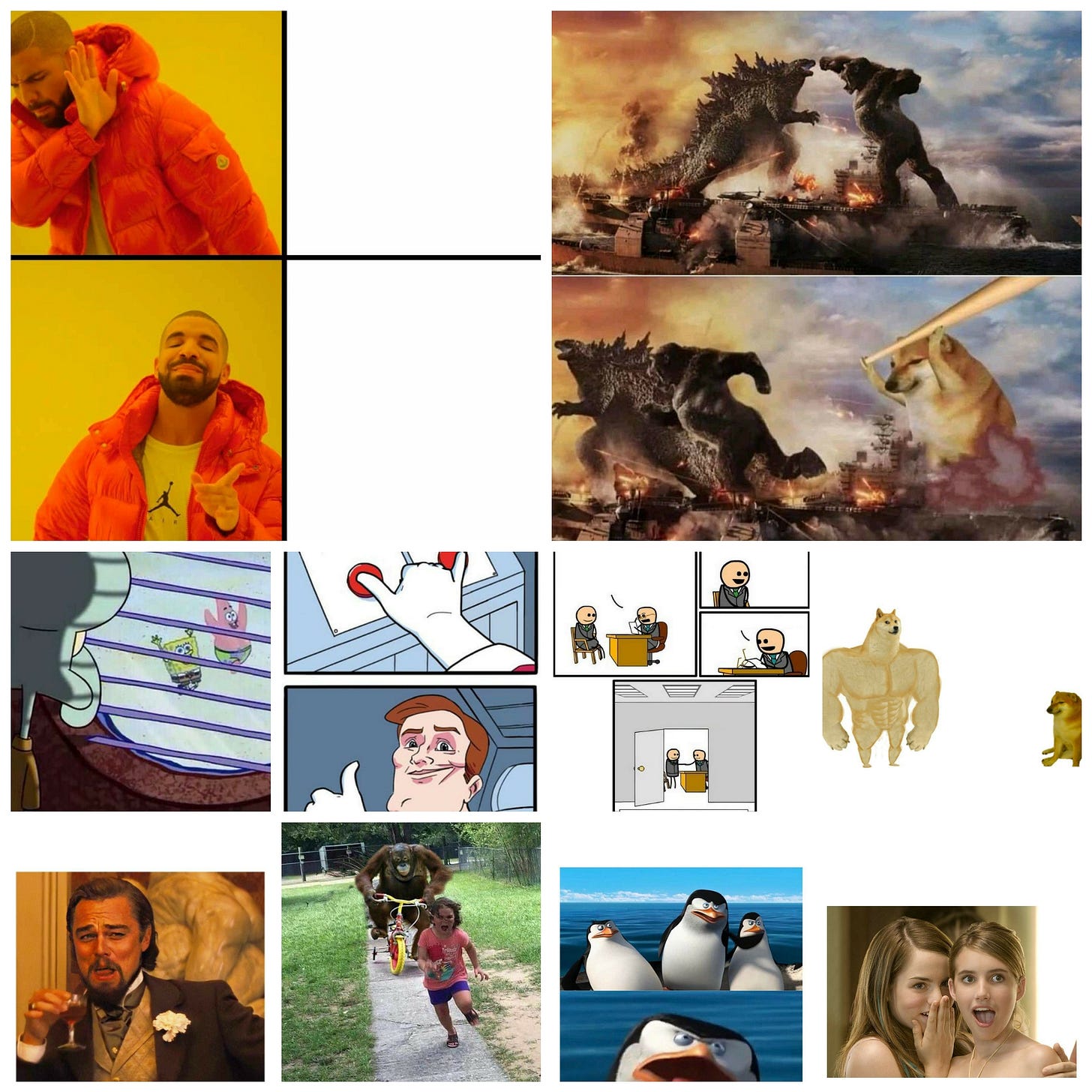Myths, Memes, and the Semiotics of Cultural Production
The survival of the wittiest, not the fittest
At 3 a.m., bathed in the blue light of your screen— absolutely zooted on sleep deprivation and the last dregs of your fourth cold brew— you mindlessly scroll past a meme. It’s not even a new meme; it’s the thousandth iteration of the same meme: the Harambe Heaven Meme.
Something about it keeps you there—thumb hovering, eyes dilated—while the pharmaceutical cocktail of dopamine and cortisol floods your nervous system. Harambe’s pixelated ghost stares back at you, like a digital memento mori.
How did a dead ape in a Cincinnati zoo a decade ago become this viral content shared by billions of people over and over today?
Or for that matter, why do we compulsively share thousand and thousands of meme templates? What is the significance of this internet phenomenon?
The answer lies in something older than the internet, older even than culture: evolution. Not the kind that grows opposable thumbs or breeds peacocks, but the kind that trades in ideas, in replicable, transmissible cultural DNA.
Today, “meme” conjures up a looping TikTok sound or a recycled Twitter joke, but the original concept was more ambitious: memes are cultural genes. Units of thought, gesture, or style that replicate, mutate, and evolve. They survive not by truth or merit, but by adaptability and appeal. And if we take them seriously, we begin to see our civilization not as a linear march of reason, but as a teeming evolutionary jungle of symbols.
You see, natural selection operates under a simple logic: those best adapted to their environment survive and replicate. In biology, this leads to fins, feathers, and pheromones. In culture, it leads to formats: ways of communicating that are catchy, shareable, and emotionally charged.
Keep reading with a 7-day free trial
Subscribe to THE HEGELIAN DISPATCH to keep reading this post and get 7 days of free access to the full post archives.





